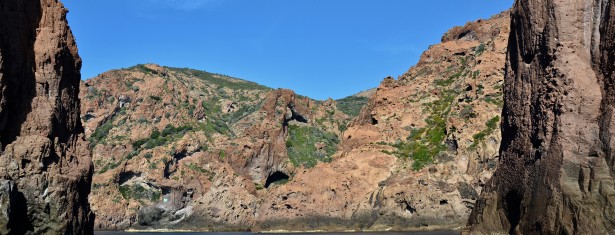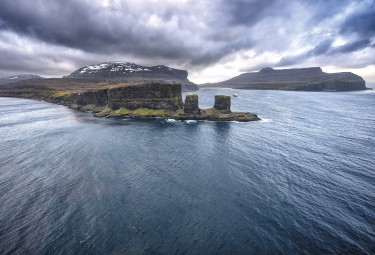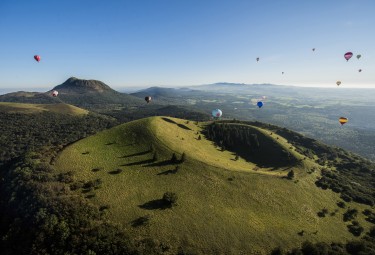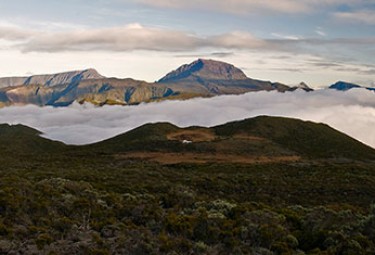Gulf of Porto: Calanche of Piana, Gulf of Girolata, Scandola Reserve

Summary
The Gulf of Porto site, which includes the Calanche (a steep-sided inlet) of Piana, the Gulf of Girolata, and the Scandola Nature Reserve, are the most northerly indentations carved out of the west coast of Corsica. The architecture is limited by three vast steep-sided promontories of red volcanic rock (Cap d’Elbo, Cap Seninu and Capo Rosso) which plunge directly into the sea from a height of nearly 800 metres. The site is of great interest on account of both its stunningly beautiful natural landscape and its land and marine ecosystems which host a wealth of endemic flora and fauna. The impressive landscape is the result of its distinctive geomorphology and the sharply contrasted colours – the incandescent red rocks and the cobalt blue sea.
The nature reserve, which is part of the Regional Natural Park of Corsica, is on the peninsula of La Scandola, a rugged porphyry massif. Its vegetation is a remarkable example of maquis. It is home to gulls, cormorants and sea eagles. The clear waters, with islets and inaccessible caves, host a rich marine life.
Criteria
Criterion (vii): Exceptional natural beauty of the land mass formations with superlative natural features. The site is on an impressive, rugged porphyry massif, giving an impression of boundless wilderness and eternity. The central promontory of Cap Seninu, which separates the Gulf of Girolata from the Gulf of Porto, is the major feature of the landscape, strikingly visible as soon as one enters the site, from the village of Piana and all along the Calanques road, and from the marina of Porto. The south side of the gulf forms the famous Calanches de Piana, with their rugged red cliffs carved by intense wind erosion, resulting in an extraordinary procession of mineral sculptures above the sea. The sharply indented shoreline composed of red rocks is almost inaccessible.
In addition to their historical importance, the Genoese towers perched on the headlands are also distinctive features of the magnificent landscape. The combination of water, rock and vegetation, together with the kaleidoscope of colours, has created a striking landscape of universal value which cannot fail to leave the visitor spell-bound.
Criterion (viii): An outstanding example of biological evolution. The marine area of the site, particularly in the Scandola nature reserve, is remarkable for its wealth of algae. The terracing of living forms is very representative of the Mediterranean coastal environment: the “pavement” of lithophyllum (alga) leads to a bed of posidonia which can be up to 35 metres deep. Remarkable coralligenous structures form up to the edge of the continental shelf. This area has the highest level of preservation and biodiversity in the Mediterranean, notably due to the density and exceptional longevity of several aquatic species such as the brown grouper, corb, white seabream and spiny lobster. The balance of the food chain has been maintained. On land, there is remarkable flora, with rare species endemic in Corsica and Sardinia, and remarkable sea-birds including the osprey.
Criterion (x): An area with communities of rare or threatened animal and plant species. The marine environment contains algal formations that are very rare in the Mediterranean, notably the posidonia beds. The area also has an exceptional variety of marine ecosystems and pelagic fauna.
On land, the site is colonized by rare and spectacular birds, including herring gulls on the islands, crested cormorants nesting on the cliffs, and golden eagles. The inaccessible rocky pinnacles on the coast provide refuge for two of the most threatened birds of prey – the peregrine falcon and the osprey. The latter is found in only two other sites in the Mediterranean.
- Année d'inscription : 1983
- Critères d'inscription : vii, viii, x
- Superficie du bien inscrit : 11 800 ha
- Localisation : Departments of Corse du Sud and Haute-Corse, Region of Corse
- Coordonnées DMS : N42 19 30.7 E8 37 43.8
- Registration year : 1983
- Registration criterion : vii, viii, x
- Area of the inscribed : 11 800 ha
- Location : Departments of Corse du Sud and Haute-Corse, Region of Corse
- Coordinates DMS : N42 19 30.7 E8 37 43.8





